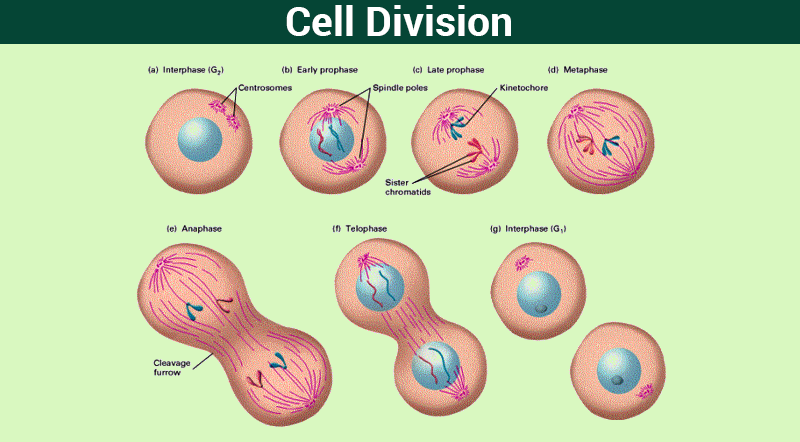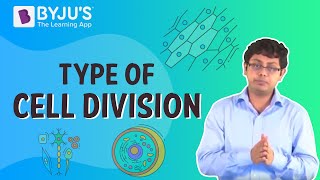Cell division and nuclear division are interrelated processes in a cell cycle. They usually aid in the formation of new cells. This division process is necessary for an organism’s growth, reproduction, and survival.
What Is Cell Division?
Cell division happens when a parent cell isolates and reproduces to give at least two daughter cells. This happens by the splitting of the nucleus and the cytoplasm. Also, the newly formed daughter cells can split themselves into further copies. Thus, a single cell duplicates itself into multiple identical copies.

What is Nuclear Division?
The cycle by which the core separates, bringing about the isolation of the genome, is called nuclear division. It is the starting part of the cell division process. Karyokinesis is used to describe the nuclear division during the cell replication process.
The nuclear division occurs during meiosis and mitosis. Here, the DNA replicates and segregates its genetic material. The chromosomes condense and split into sister chromatids. These chromosomes reach the poles, and finally, lead to cell division.
Also Read: Structure of nucleus
Differences between Cell Division and Nuclear Division
Cell Division |
Nuclear Division |
| It is a process where a single cell divides into two identical copies. | It is a process where the nucleus inside the cell divides during the cell division process. |
| This involves both cytoplasmic division and nuclear division. | Here, the chromosomes condense and move to the opposite poles. Thus, the genetic material is equally split. |
| This helps in the formation of two daughter cells. | This helps in the formation of two/four nuclei. |
Frequently Asked Questions
What is cytokinesis?
Cytokinesis and karyokinesis are two different and vital processes of cell division. Cytokinesis means the division of the cell cytoplasm. This helps to divide the cell into two physical halves and usually happens after nuclear division. Whereas karyokinesis implies the division of the nuclear material.
What is a cell cycle?
The cell cycle is nothing but the sequential division of the cell. It involves the division of the cytoplasm, organelles, and genetic material duplication. All these result in the production of new daughter cells. Thus, a new cell population is formed with the help of a single cell.
What is meiosis and mitosis?
The cell usually replicates in two ways – meiosis and mitosis. Meiosis happens in the germ cells, where two nuclear divisions occur. Thus, four new cells with haploid chromosomes are formed. Whereas mitosis occurs in the somatic cells. In mitosis, two diploid cells are produced.
What is the difference between plant and animal cell division?
There is a cell plate formed during the cell design of plant cells. Whereas in animal cells, there is a furrow or cleavage that splits the cell.

Also see: Cell cycle
Visit BYJU’S Biology for more interesting topics.
Comments